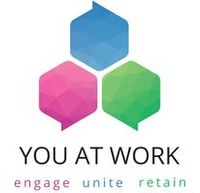How to evaluate, procure and measure the success of a benefits platform

Be clear on your why ...
Start with a clear vision of why you are implementing a benefits platform - a vital component of proving the business case and securing budget. For example: Is your organisation experiencing rapid growth and you need to quickly hire staff with the right skills, values, and cultural fit? Do you require a defensive strategy to retain the talent you have invested in and your competitive advantage? Or do your employees and candidates expect certain benefits to match competitor offerings? Setting a target for improving retention and labour turnover is common, as is attracting suitable candidates or measuring the ‘before and after’ impact on productivity or sales performance.
Decide on your key requirements
When shortlisting potential suppliers have a clear list of requirements. Can they meet your budget, are they a good cultural fit, do they have experience of working with organisations like yours? Can they advise suitable benefits for your organisation and workforce demographic? Is their software fun and easy to use?
In a survey run by You at Work last year, by far and away the biggest concerns heard from employers were, making sure they got a cheaper system with more predictable costs and being able to introduce technology that reduces the administration burden of operating a scheme. As well as these two key areas, there are some other vital points that you might want to consider.
Hidden Costs & Admin Burdens
The technology you receive needs to allow you to make changes without having to involve your provider. Some systems don’t have the capabilities for users to update information themselves and you could end up with unbudgeted for charges for any minor amends. Similarly, you shouldn’t see bills come in for system updates as modern technology can run these automatically without any additional fees or unnecessary admin. The best schemes have fixed fees and ensure you always have the latest software. Even in the initial set-up and introduction of the software, your provider should be able to make the transition so efficiently that there will be no need for extra administrative impact within your team.
User Friendly Software
Securing user buy-in from the outset is absolutely essential for your scheme to succeed. The software you introduce should be intuitive and cloud based so that employees find it quick, fun and easy to use, in jargon free language, immediately feeling engaged. Getting this right will mean your staff are motivated to return and visit the site often. A good provider can match the system to your brand identity which immediately makes users feel at home when interacting with it.
Benefit Provision
It should be really easy to add new benefits on the platform, sometimes at the touch of a button. Plus, you want your provider to be regularly researching the market and making new benefits available to you with negotiated rates. However, you also need the flexibility to add in your own benefits and not be tied to only “their” providers.
Customer Service Support
Once you have your new software up and running, you may not feel the need to be constantly in touch with your benefits platform provider, but for peace of mind they ought to be able to provide you with the reassurance of help always being just a phone call or keyboard tap away, whenever and wherever you need it and on whichever type of device works best for you.
Comms Support
Nothing stops a benefits platform launch in its tracks quicker than bad communication. Does the platform provide integrated comms facilities enabling you to email employees at the flick of a switch? Can you create a comprehensive, timed campaign of all benefits direct from the platform?
Reporting & Insight Capabilities
Your new software system needs to be able to provide you with the right MI to gauge the success of your scheme and to see how each of your benefits are performing. Dashboard reporting allows you to see up to date results at a glance whenever you want to view them. The reporting functionality should be flexible enough to provide both standard and bespoke reporting so you can analyse data, seeing what is and isn’t working and make changes accordingly, fast and efficiently.
A Clear Roadmap
The best benefit platform providers will produce a clear roadmap with a strong and achievable vision. You need to have confidence that the product you’re working with is being developed, supported and will lead innovation in the employee benefits marketplace and ought to provide opportunities for your input. Check when short listing providers that they will be able to work with you in this way.
Formal or informal procurement?
A formal Request For Proposal (RFP) process can take a long time, but if you’ve done the work to set out your vision and key success factors, you just need to translate them into a document that lists your requirements and send out to potential providers. Having a more formal process should hopefully mean that you’ll get responses you can easily compare against each other. Do give providers plenty of time to respond, however, if you want decent replies! Give them a clear timetable setting out each step of the process. When reviewing the responses you could consider analysing them against some kind of weighted scoring matrix. Finally, invite your chosen few in for a ‘beauty parade’.
If you don’t want to go down the formal route simply research online, carry out an informal market assessment and meet with providers that resonate with you the most.
Complete the circle ...
... and evaluate success based on:
- your original why. Has it contributed towards your vision and objectives?
- whether the platform is meeting the key requirements you set out at the beginning
- useful employees are finding the platform and how engaged they are with it
- how easy your admin staff are finding it to use
- the take-up of benefits by employees and whether they have met your expectations
- how engaged with the organisation employees are generally. Consider carrying out an employee Engagement survey before and after launch.
Set yourself up for success ...
Once you have selected your benefits platform provider, set yourself up for success and work with them to create a structured project framework. Set milestones, make provisions for dependencies, and have a contingency plan. Draw on the experience from your software partner and seek their advice and guidance on implementing and communicating employee benefits schemes.
This article is provided by You at Work.
In partnership with You at Work
The You at Work platform is affordable, easy to use and fast to set up,







